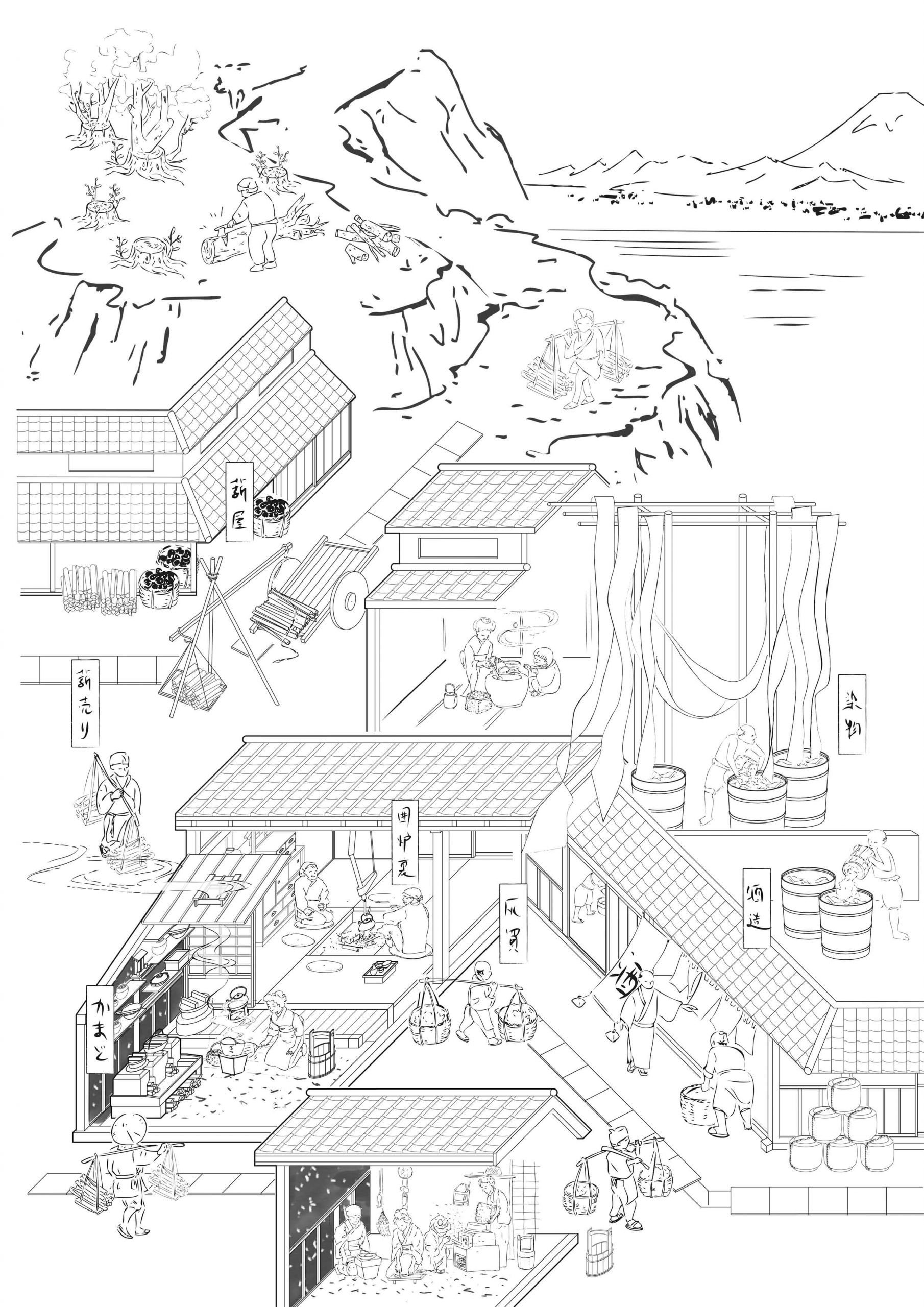As a once archetypal household element, the stove has gradually become invisible in contemporary housing, with open-flame cooking disappearing into glasstop IH stoves and heating being concealed in the floors. Simultaneously the energy supply system has grown into an extensive and cohesive global network, at once distant and thus invisible to its end users yet heavily transforming the hinterland. Until the end of the nineteenth century the network was tangible and concrete: firewood was acquired from the forest, purchased by each household and used for the stove, and afterward the ash produced was re-collected by ash-traders for other uses such as sake brewing. From around 1960 Japan increasingly imported liquefied natural gas via tanker ships as an alternative energy supply, requiring a complicated gas-supply infrastructure, along with urban renewal, including shipyards, pipelines, gasometers, etc. Today the power system is a hybrid one, fed from multiple resources, including atomic power and renewable energy, making the network evermore extensive and abstruse.
Student: Emma Xiao
Fire Escape
Open fire-escape stairs are a common and distinguishing feature in multistory buildings in Japan. Their primary purpose—to allow rapid and safe evacuation in case of emergency—seems perfectly inscribed in their position, shape, and materiality, yet the behaviors that take place transcend them by far: be it as a viewing platform accessible to outsiders; be it as an indoor area in high-density urban residences where the inhabitants casually use the stair as an extension of their living space or practice mutually accepted domestic activities; or be it as an ambiguous realm in the house, neither inside nor outside, where intimate, emotional, dramatic, and mysterious events can happen.
